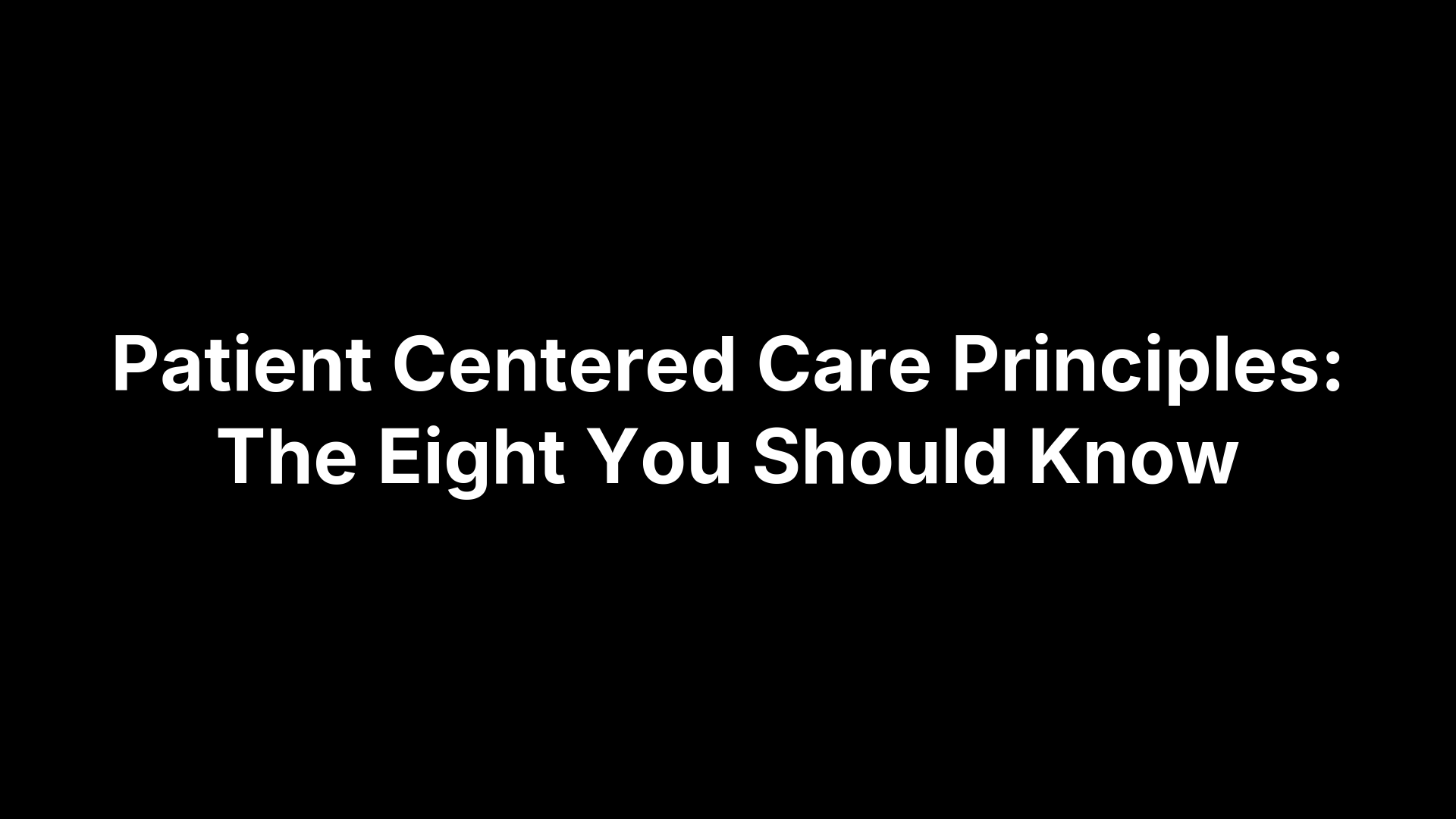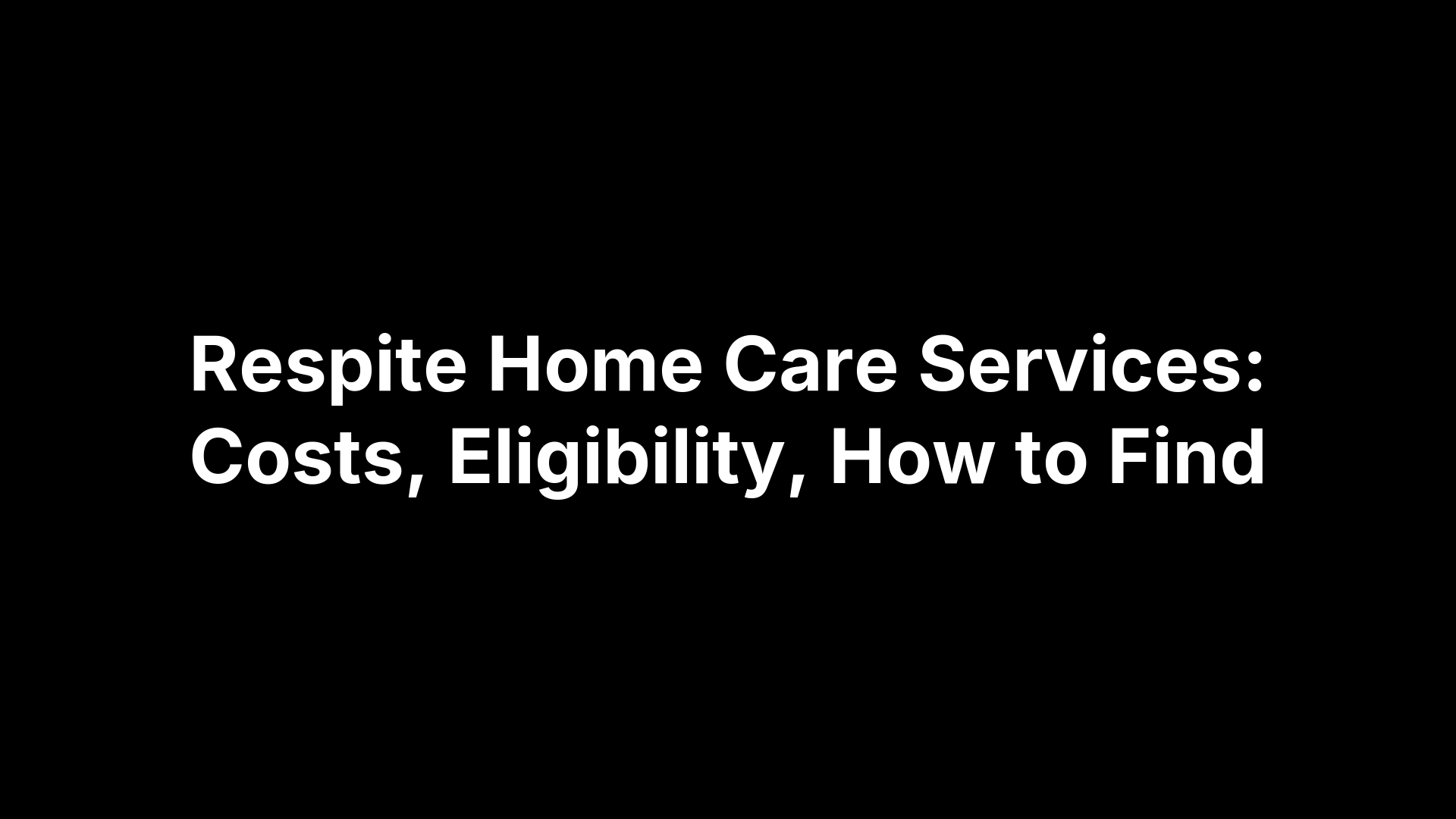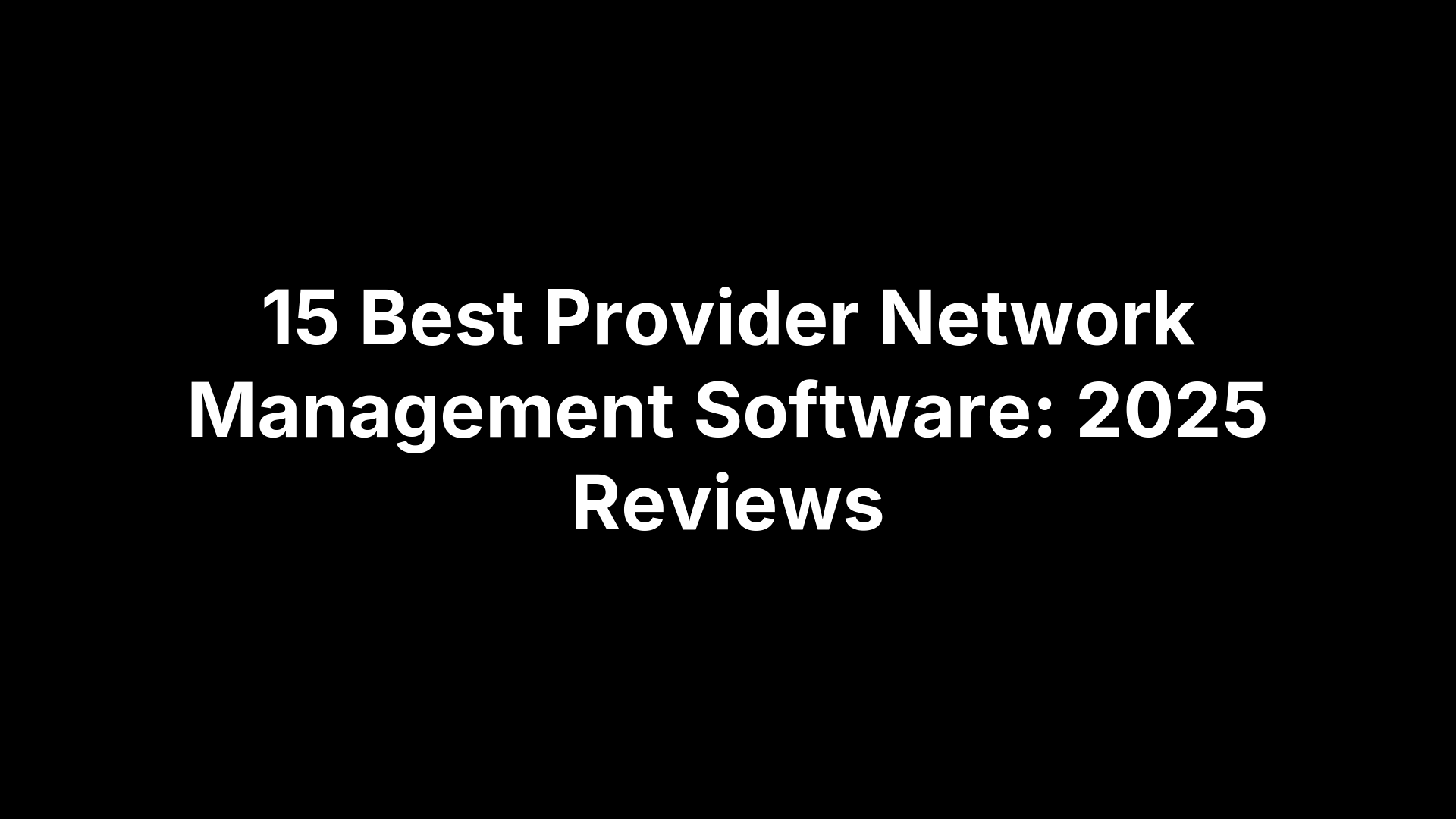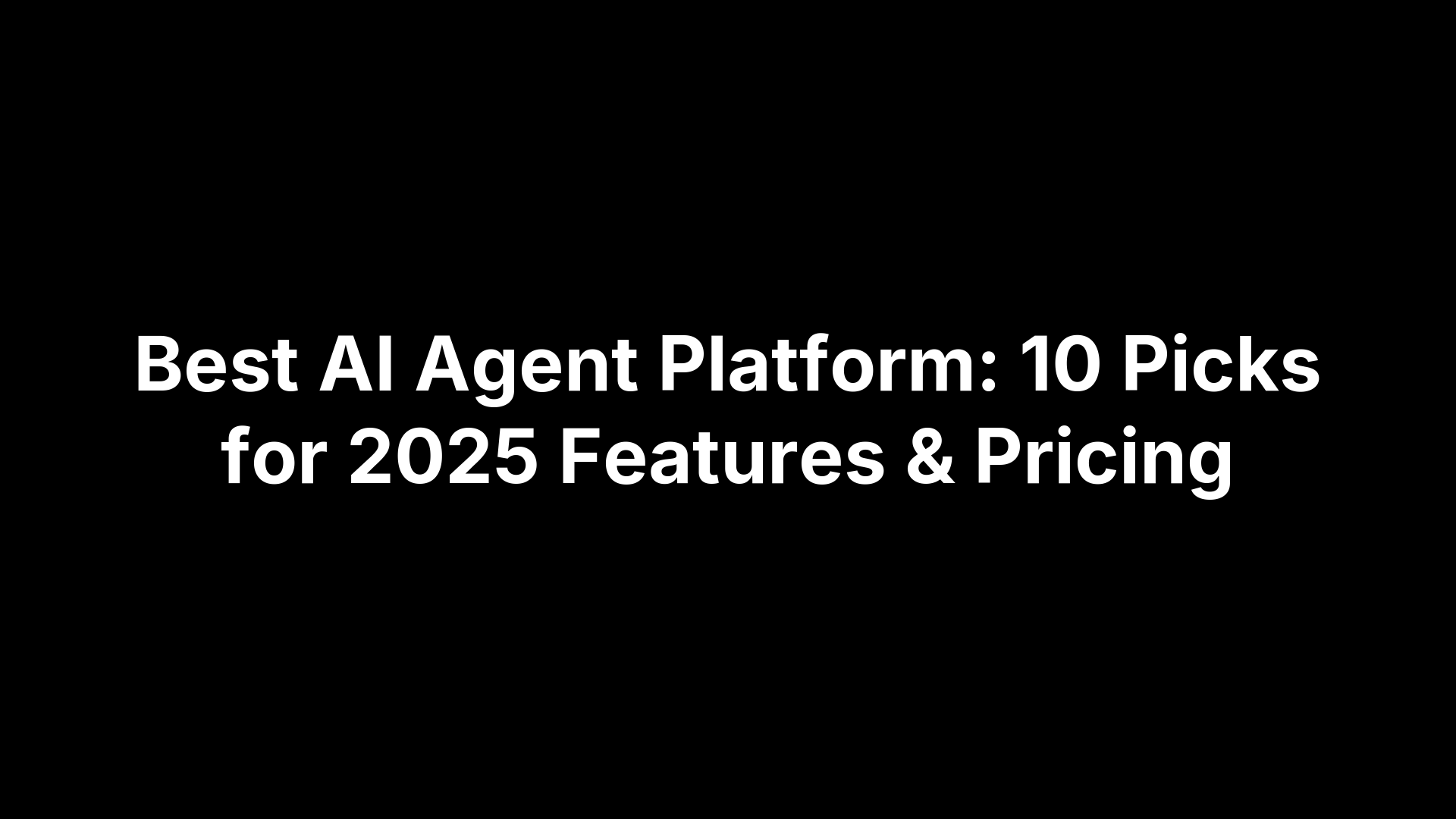Healthcare Workflow Automation: Benefits, Examples & Tools

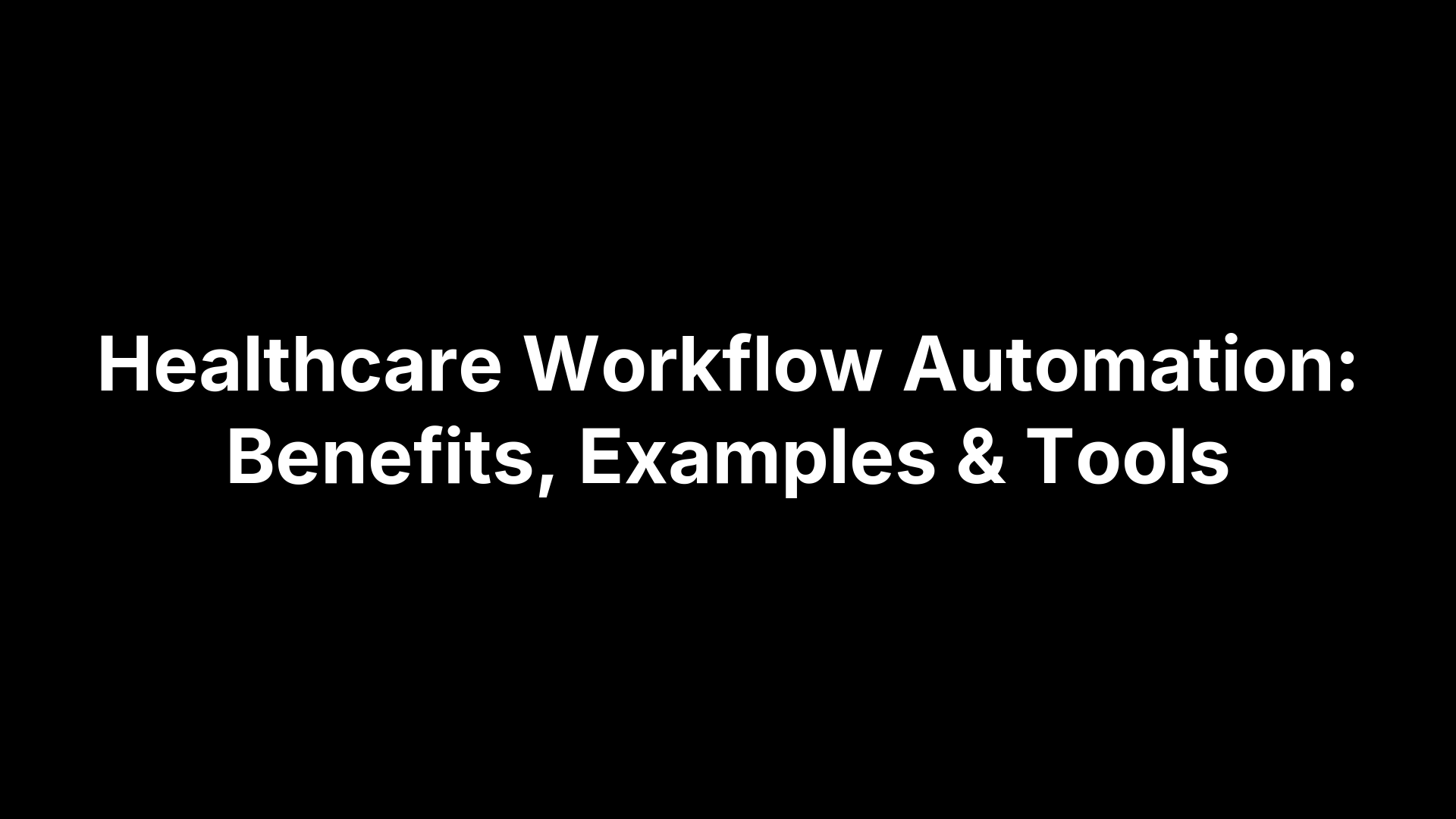
Healthcare Workflow Automation: Benefits, Examples & Tools
Healthcare workflow automation uses digital systems, seamless integrations, and AI agents to lift repetitive manual steps out of clinical, administrative, and operational routines. By handing the busywork to software, organizations reclaim time, cut costs, and give clinicians space to focus on patient care.
Record staffing gaps, tighter reimbursement rules, and consumer-grade service expectations are colliding just as 2025’s cloud, FHIR, and no-code tools mature enough to automate safely at scale. Hospitals already automating discharge scheduling, prior-auth paperwork, or transport dispatch are shaving hours off turnaround times and six figures off annual spend. The payoff isn’t only operational; patients notice smoother visits, fewer delays, and better continuity of care.
This article breaks down the essentials: clear definitions, measurable benefits, frontline use cases, features to look for, a head-to-head tool comparison, a step-by-step rollout roadmap, and concise answers to the questions teams ask most. Use it to plan your next move.
What Is Healthcare Workflow Automation?
Think of a healthcare workflow as a relay race: one task hands the baton to the next until the patient reaches a clinical or business finish line. Healthcare workflow automation simply replaces as many hand-offs as possible with reliable, rules-driven software so that the humans involved can focus on judgement, empathy, and high-value problem-solving.
Definition & Core Concepts
A workflow is the ordered set of tasks, data exchanges, decisions, and people required to achieve a clinical outcome or fulfill a business obligation (e.g., reimbursing a claim).
Automation is the technology-enabled execution of those tasks with minimal human touch. In practice, that can mean:
- EHR rules engines that auto-populate discharge summaries
- Robotic process automation (RPA) bots that copy data between legacy screens
- Business-process-management (BPM) suites orchestrating multistep approvals
- No-code platforms letting frontline staff drag-and-drop forms and logic
- AI agents that schedule rides, negotiate rates, or flag coding errors
The common thread is interoperability—each tool must plug into EHR, PMS, CAD, or billing systems so data flows once and stays accurate.
Manual vs Automated Workflows: Key Differences
| Activity | Manual Pain Point | Automated Benefit |
|---|---|---|
| Patient intake | Clipboard forms re-typed by registrar | Mobile pre-reg posts directly to EHR |
| Insurance verification | 15-minute payer phone call | API check in < 30 seconds |
| Transport dispatch | Multiple hold-time calls | Single click creates trip, shares ETA |
Automated paths compress time, cut transcription errors, surface real-time status, and lift morale by giving staff cleaner, higher-impact work.
How Automation Fits Into Clinical, Administrative, and Operational Processes
- Clinical: Care pathways, medication reconciliation, and discharge planning trigger automatically when criteria are met, ensuring evidence-based steps aren’t skipped.
- Administrative: Claims submission, prior authorizations, or provider credentialing run through digital queues with built-in validations and e-signatures.
- Operational: Bed turnover, inventory restocking, and patient transport scheduling integrate with CAD or supply-chain systems to keep resources where they’re needed.
Because these categories share data, the most effective solutions expose FHIR APIs, HL7 feeds, and webhook callbacks, turning once-isolated tasks into a unified, error-resistant flow.
Why Healthcare Organizations Are Investing in Workflow Automation
Hospitals didn’t wake up one morning and decide that bots were cool—they’re scrambling for survival levers. Staffing pipelines are shrinking, payer rules keep multiplying, and patients shop around like retail customers. Healthcare workflow automation has emerged as a pressure-release valve, converting slow, error-prone chores into background activity and freeing scarce human talent for care that actually requires a heartbeat.
Alleviating Workforce Shortages and Burnout
A 2024 AMA poll found 58 % of clinicians list “paperwork and prior auth” as their chief burnout trigger. Offloading chart updates, order routing, and ride scheduling to software means:
- Fewer after-hours clicks in the EHR
- More time practicing at top of license
Organizations using automated discharge and transport workflows report reclaiming 2–3 clinician hours per shift—often the difference between overtime and a sane schedule.
Reducing Administrative Costs and Paperwork
Every manual form costs money twice: once to fill out, again to fix typos. McKinsey pegs the average at $4–$6 per document, while an API-driven submission runs for pennies. Examples:
- Automated eligibility checks slash verification time from 15 minutes to under a minute.
- RPA claims bots boost first-pass acceptance rates by 10 %–15 %, cutting rework.
Multiply that across thousands of encounters and seven-figure annual savings start to look routine.
Enhancing Patient Experience and Outcomes
Patients feel the lag of manual processes as wait times, duplicate questions, and surprise bills. Automation counters with:
- Real-time appointment slots surfaced on patient portals
- SMS reminders that lower no-show rates by up to 38 %
- Instant ride-share ETAs that smooth the trip home
Quicker touchpoints translate into higher HCAHPS scores and stronger value-based reimbursement.
Compliance, Security, and Audit Readiness
Regulators love timestamps and immutable logs—humans, not so much. Automated workflows:
- Generate audit trails automatically
- Enforce role-based access and encryption by default
- Auto-populate PCS or ABN forms, preventing missed documentation
The result is fewer HIPAA violations, cleaner audits, and peace of mind when the Joint Commission shows up.
High-Impact Use Cases and Examples Across the Care Continuum
Automation is most valuable when it tackles bottlenecks that touch many patients and staff members every day. The following examples show where healthcare workflow automation consistently delivers hard ROI and happier clinicians—all while slotting neatly into existing EHR or practice-management infrastructure.
Patient Intake and Registration
Clipboards and re-typing are irritation multipliers. A mobile pre-registration link lets patients photograph their insurance card, complete consent forms, and verify demographics before they step foot in the lobby. Optical character recognition (OCR) pushes the data to the EHR, and a rules engine flags mismatches (e.g., expired coverage) for staff review rather than blind acceptance.
Actionable tip: embed an e-signature field for HIPAA and financial responsibility forms so front-desk staff no longer chase wet signatures.
Scheduling & Referral Management
Manual phone tag between primary, specialist, and patient can stretch referrals into multi-week sagas. Automated scheduling layers calendars from multiple systems, applies configurable rules (insurance, location, specialty), and surfaces the earliest qualified slot. Once a referral is accepted, secure digital document exchange replaces auto-fax purgatory, and patients receive SMS confirmations plus reminders. Organizations adopting referral automation report wait-list shrinkage of up to 30 % and fewer leakage events—both key metrics under value-based care contracts.
Transportation and Logistics Coordination
Discharge delays often come down to “the ride isn’t here.” Platforms like VectorCare create non-emergency transport requests inside a no-code Hub; an AI agent automatically dispatches the right vehicle, negotiates price, and shares real-time ETAs with nurses, case managers, and families. Hospitals using automated transport workflows have cut average discharge-to-door time by 90 minutes and reclaimed bed capacity that would otherwise sit idle. The same logic applies to home-care visits and durable-medical-equipment deliveries.
Medication & Pharmacy Operations
Pharmacy queues slow down treatment plans and frustrate patients. RPA bots can submit refill authorizations, while AI document parsers extract data from handwritten prescriptions and feed dispensing cabinets or 340B tracking tools. Barcode scanning tied to automated reconciliation prevents look-alike/sound-alike errors, and inventory thresholds trigger just-in-time reorders, averting costly stockouts. Clinics piloting pharmacy automation have shaved two to three FTE hours per day from technician workloads and reduced medication errors by double digits.
Revenue Cycle Management and Billing
The revenue cycle is riddled with copy-and-paste drudgery that invites mistakes. Automation scripts mine structured data from clinical notes, auto-populate CMS-1500 fields, and run coding validation rules before claim submission. When an insurer responds, automated worklists triage denials by reason code so humans tackle only the exceptions. Patient statements generate with dynamic QR codes for online payment, pushing collections higher without extra calls. Health systems deploying automated RCM workflows regularly see first-pass claim acceptance climb above 96 % and days in A/R drop by one to two weeks.
Must-Have Features in Healthcare Workflow Automation Tools
Even the slickest user interface won’t save you if the platform can’t talk to Epic, protect PHI, or surface ROI data. Before signing a multiyear contract, make sure the shortlisted vendor checks every box below. These capabilities separate consumer-grade task apps from enterprise-ready healthcare workflow automation engines.
No-Code / Low-Code Workflow Builder
Drag-and-drop form fields, conditional logic, and parallel branches let operations staff prototype a new discharge workflow in hours, not sprint cycles.
Key advantages:
- Iteration without IT tickets or vendor fees
- Sandbox testing to model edge cases
- Reusable templates that speed rollouts across departments
Integration With EHR, PMS, and Other Systems
Data should enter once and ripple everywhere. Look for:
- HL7 v2 and FHIR APIs for clinical data exchange
- Webhooks or message queues for real-time event triggers
- Pre-built connectors to CAD, billing, and identity-management tools (SSO)
Tight integration prevents swivel-chair re-entry and maintains a single source of truth.
Real-Time Notifications and Communication
A workflow is only as strong as its handoffs. Multichannel alerts—SMS, secure in-app chat, email—keep nurses, transport vendors, and patients aligned. Must-haves:
- Configurable escalation rules (e.g., no response in 10 minutes)
- Read receipts and timestamped audit trails
- Two-way messaging so users can update status without opening the EHR
Analytics & AI-Powered Insights
Dashboards that track throughput, average task time, and cost savings make the business case stick. Advanced platforms layer on machine-learning forecasts to predict staffing needs or identify bottlenecks. Export options (CSV, SQL, or Snowflake connectors) allow finance and quality teams to mash up data with existing BI tools.
Security, HIPAA Compliance, and Vendor Management
Encryption at rest and in transit, granular role-based access, and automatic log retention are table stakes. Ask for a signed BAA, SOC 2 report, and evidence of regular penetration testing. If outside vendors handle transport or home care, the tool should also manage credentialing documents, policy acknowledgments, and auto-expiring certificates so compliance isn’t a separate spreadsheet.
Together, these five feature sets create a foundation sturdy enough to automate mission-critical healthcare workflows while keeping regulators, clinicians, and CFOs equally satisfied.
Top Workflow Automation Tools and Platforms to Consider in 2025
Below are five vendors making tangible dents in paperwork, phone tag, and spreadsheet sprawl. Each offers a different slant on healthcare workflow automation, so match the strengths to your highest-pain processes before you sign an agreement.
VectorCare – Patient Logistics & Service Coordination Hub
VectorCare focuses on the operational layer where transport, home health, and DME deliveries often derail discharge timelines. Its no-code Hub lets case managers drag-and-drop steps—orders, signatures, vendor bids, real-time ETA sharing—into a single screen. Automated Dispatching Intelligence (ADI) even negotiates rates with contracted vendors while Insights dashboards show minutes saved and beds freed. Pricing follows a SaaS subscription with per-facility tiers and optional AI add-ons. Health systems, payers, and county EMS groups that juggle thousands of service requests a month will feel the biggest ROI; small clinics may start with a limited-seat license and grow later.
Plenful – Pharmacy & Administrative Workflow Automation
Plenful zeroes in on pharmacy and back-office clerical work. Its AI document engine extracts data from faxes, PDFs, and email attachments, then nudges RPA bots to complete inventory updates, 340B audits, or prior-auth packets without technician key-strokes. A visual workflow editor supports conditional routing (e.g., route high-risk drugs to pharmacist review), and a dashboard tracks refill cycle times. Subscription pricing scales by prescription volume, making it attractive to hospital pharmacies, specialty chains, and IDNs that process high script counts but don’t want heavyweight BPM suites.
FlowForma – Digital Process Automation for Microsoft Shops
Built on SharePoint and Office 365, FlowForma brings drag-and-drop workflow design, e-forms, and e-signatures to organizations already married to the Microsoft stack. Healthcare templates cover incident reporting, clinical audits, and HR onboarding; connectors talk to Outlook, Teams, and SQL without code. Because it lives inside Azure, data residency and Active Directory permissions stay consistent with existing IT policies. Licensing is a per-user or per-workflow SaaS fee, ideal for mid-sized hospitals, community clinics, or research institutes wanting quick wins without standing up new infrastructure.
Xerox Workflow Automation Solutions
Xerox leans on its document-management pedigree to attack paper bottlenecks: admission packets, consent forms, lab requisitions, and radiology orders. Multifunction devices scan, classify, and route documents directly into the EHR or ECM using OCR and barcode logic. A web console shows real-time queue status and SLA compliance; analytics reveal which departments still cling to paper. Pricing is usually bundled with device leases or cost-per-page contracts, making it predictable for large health networks drowning in paper. Smaller facilities can start with scan-to-EHR modules only.
Medsphere Micro-Office Systems – Legacy Form & Data Integration
Medsphere’s Micro-Office Systems is the glue for organizations saddled with green-screen billing or home-grown LIS software. Its configurable RPA bots pull data from flat files, HL7 feeds, or terminal emulators and push complete records into modern applications. Built-in validation rules flag missing fields before claims, immunization registries, or quality reports go out the door. Deployment options include on-prem appliance or cloud VM, and pricing runs on a one-time license plus annual maintenance—appealing to community hospitals and county health departments that need modernization without ripping out legacy cores.
Overview Comparison Table
| Tool | Primary Use Case | Best For | Key Integrations | HIPAA Compliance | Pricing Approach |
|---|---|---|---|---|---|
| VectorCare | Patient transport, home care, DME coordination | Large hospitals, payers, EMS agencies | EHR (HL7/FHIR), CAD, billing APIs | Yes, BAA included | Tiered SaaS, AI add-ons |
| Plenful | Pharmacy ops, doc processing | Hospital & specialty pharmacies | EHR, inventory, Surescripts | Yes | Volume-based SaaS |
| FlowForma | E-forms & approvals on Microsoft 365 | Mid-size orgs, research institutes | SharePoint, Teams, SQL | Yes | Per user / per workflow SaaS |
| Xerox Workflow Automation | Paper digitization, scan-to-EHR | Health networks with heavy paper load | EHR, ECM, fax servers | Yes | Device lease or cost-per-page |
| Medsphere MOS | Legacy system RPA, claims | Community hospitals, public health | HL7, flat file, terminal emulation | Yes | License + maintenance |
Together, these platforms cover the spectrum from bedside logistics to back-office paperwork, giving nearly every provider a viable on-ramp to healthcare workflow automation in 2025.
Implementation Roadmap: From Pilot to Enterprise-Wide Rollout
Choosing the best software is only half the battle; the bigger lift is weaving healthcare workflow automation into everyday routines without breaking anything important. The roadmap below reflects lessons learned from dozens of hospital and ambulatory deployments and keeps the focus on speed, safety, and measurable payoff.
Mapping Current Workflows and Pain Points
Start by observing—not guessing—how work really happens. Shadow front-line staff, run quick time-motion studies, and sketch value-stream maps that show tasks, hand-offs, systems, and wait states. Capture baseline metrics like turnaround time (TAT), manual touches, error rates, and full-time-equivalent (FTE) hours. These numbers become your before-photo and will later anchor ROI calculations.
Building a Cross-Functional Automation Team
Automation projects stall when they’re “owned” by IT alone. Form a squad that blends:
- An executive sponsor who secures funding and removes roadblocks
- A clinical champion who validates patient-safety impacts
- An IT integration lead who handles APIs, FHIR feeds, and security
- Front-line “super users” who pressure-test workflows and evangelize wins
Define governance up front: change-request process, escalation paths, and a regular cadence for reviewing metrics and user feedback.
Selecting the Right Pilot Project and KPIs
Pick a high-volume, low-complexity process—think discharge transport requests or insurance eligibility checks—that annoys many people yet carries minimal clinical risk. Set 3–5 KPIs such as average task time, first-pass accuracy, staff clicks saved, and patient satisfaction delta. Aim for a 60–90-day pilot window so leadership sees tangible results before enthusiasm fades.
Change Management and Staff Training
People don’t resist technology; they resist surprises. Announce why the change matters, what’s staying the same, and what’s in it for each role. Pair micro-learning videos with live sandbox sessions where users can “break” the system safely. Provide at-the-elbow support during go-live and collect daily feedback to tweak forms, notifications, and logic in real time.
Measuring ROI and Scaling Success
After the pilot, pull the same metrics gathered during mapping and calculate savings using the simple formula:
ROI = (Baseline Cost – Automated Cost) / Implementation Cost.
Share quick-hit wins—“discharge requests now take 3 clicks instead of 10”—in town-hall slides and email blasts. Once leadership green-lights expansion, roll out in 90-day waves: replicate the workflow template, adjust to local nuances, and rerun the metric playbook. Continual measurement keeps gains from back-sliding and turns automation into standard operating procedure rather than a one-off project.
Common Questions About Healthcare Workflow Automation
Even convinced champions still have sticky “yes, but…” concerns. Below are the objections we hear most when teams size up healthcare workflow automation, along with ground-truth answers you can share at the next steering-committee meeting.
What Processes Should Never Be Automated?
Anything that hinges on human empathy—breaking bad news, end-of-life counseling, complex shared-decision conversations—should remain a face-to-face art. Likewise, tasks that require nuanced clinical judgement amid incomplete data (rare-disease diagnosis, atypical drug reactions) demand a clinician’s brain. Automate the paperwork surrounding those moments, not the moments themselves. Use guardrails: require human sign-off before bots release orders or communicate irreversible information.
How Does Automation Affect Clinical Decision-Making?
Done right, it augments rather than overrides. Rules engines can surface guideline-based prompts or pre-populate orders, but final approval still rests with the licensed provider. Transparency—showing the data and logic that led to a suggestion—keeps clinicians “in the loop” and curbs algorithmic bias. Many organizations bake in a hard stop: no automation can push a medication change without an MD or PharmD click.
Can Small Clinics Afford Workflow Automation?
Yes. Cloud subscriptions start at a few dollars per user per month, and no-code templates mean you don’t need an IT team. Most solo or rural clinics begin with automated intake forms and SMS reminders—low-risk projects that pay for themselves within a quarter by eliminating paper scanning and no-show gaps.
Future Trends: AI Agents, RPA, and Interoperability
Expect conversational AI schedulers that negotiate appointment times by text, RPA bots that reconcile payments overnight, and FHIR-native platforms that plug into any EHR with a QR-code scan. As APIs standardize and compute costs fall, automation will shift from isolated scripts to self-orchestrating agents that learn and optimize continuously.
Key Takeaways & Next Steps
- Healthcare workflow automation replaces clipboard chores and phone tag with interoperable software, AI agents, and no-code rules that move data once and keep it clean.
- The payoff shows up fast: lower operating costs, fewer clinician clicks, quicker discharges, happier patients, and audit-ready logs that make regulators smile.
- High-impact starting points include mobile intake, automated eligibility checks, transport dispatch, pharmacy refills, and RPA-driven claims—each proven to return measurable ROI within a quarter.
- Your launch plan is simple: map one painful workflow, pick a pilot tool that hits the must-have feature list, track pre/post metrics, then scale in 90-day waves.
Ready to see what automated transport and service coordination could save your team? Book a quick demo of VectorCare’s no-code Hub at VectorCare.
The Future of Patient Logistics
Exploring the future of all things related to patient logistics, technology and how AI is going to re-shape the way we deliver care.
